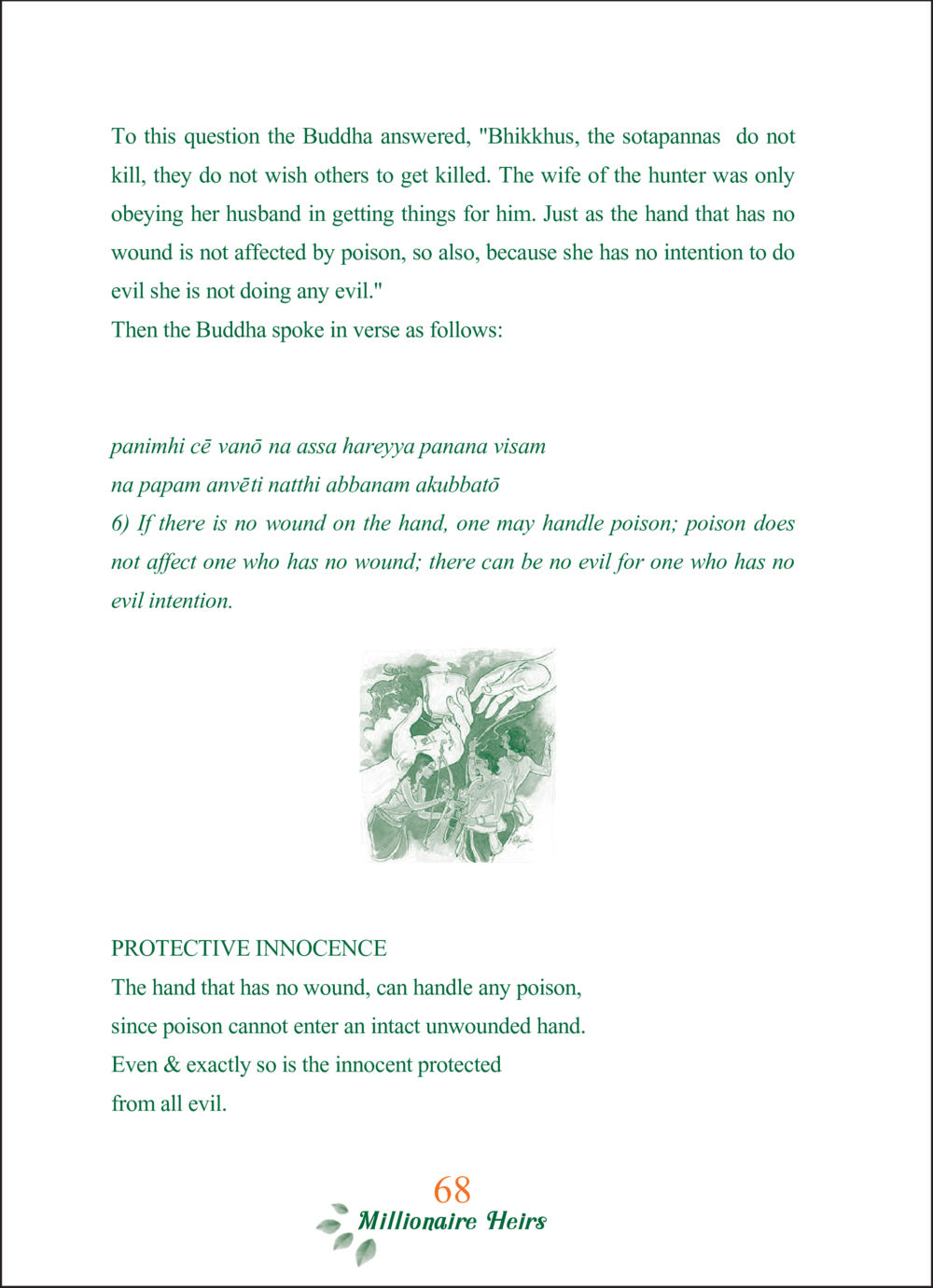The Protection of Innocence in Buddhism : หน้า 70/114
ทายาทเศรษฐี Millionaire Heirs (ฉบับ ๒ ภาษา) : หน้า 70/114 Explore the concept of innocence and its protection from evil as explained by the Buddha.
1 ครั้ง

สรุปเนื้อหา
In this discourse, the Buddha explains that true innocence, represented by the unwounded hand, is impervious to evil, just as poison cannot affect it. Sotapannas, who harbor no intentions of harm, are protected from evil actions. The verse illustrates that without evil intentions, one cannot do evil, emphasizing the importance of purity of heart and mind. The metaphor of the unwounded hand underlines the resilience of the innocent against harm. Visit dmc.tv for more insights.
หัวข้อประเด็น
-Buddhism teachings
-Concept of innocence
-Protection from evil
-The metaphor of the unwounded hand
-Implications of intention in actions
ข้อความต้นฉบับในหน้า
To this question the Buddha answered, "Bhikkhus, the sotapannas do not
kill, they do not wish others to get killed. The wife of the hunter was only
obeying her husband in getting things for him. Just as the hand that has no
wound is not affected by poison, so also, because she has no intention to do
evil she is not doing any evil."
Then the Buddha spoke in verse as follows:
paniimi cē vanō na assa hareyyā panana visam
na papam anvēti natthi abbanam akubbatō
6) If there is no wound on the hand, one may handle poison; poison does
not affect one who has no wound; there can be no evil for one who has no
evil intention.
PROTECTIVE INNOCENCE
The hand that has no wound, can handle any poison,
since poison cannot enter an intact unwounded hand.
Even & exactly so is the innocent protected
from all evil.
68 Millionaire Heirs
หน้าหนังสือทั้งหมด
หนังสือที่เกี่ยวข้อง
Load More


















































































































